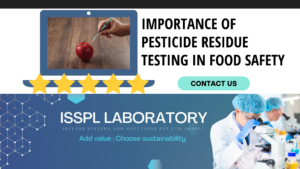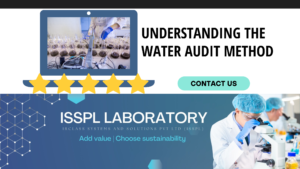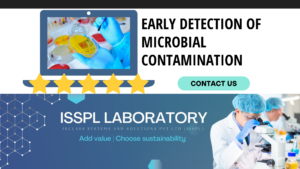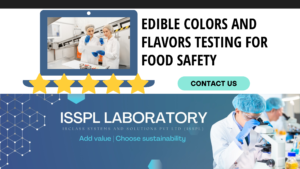An Overview by Team ISSPL - Analytical Testing Laboratory in India
ToggleEye drops are a medically-tested pharma product essential for treatment. The eye drops are applied for treating various ophthalmological diseases. It ensures the best health conditions for your eyes. One can understand the crucial factors related to the safety of the drops and ointments. The ophthalmic products must be safe and non-irritating for the eyes. Quality testing is an indispensable part as these products directly affect the eyes.
The eye anatomy – Making the safety concerns indispensable
The human eye is unique and the pharma products need to per apt for the anatomy. For instance, there are no blood vessels in the cornea. It makes localized eye drop impacts effective compared to oral medication. Thus, ophthalmologists depend exclusively on eye drops for treating various diseases. Apart from the treatment essentialities, eye drops are effective for cleansing bacteria and toxins. The proper use of eye drops helps in making the treatment effective. The good manufacturing practices and testing methods for the eye drops also determine the functionality and safety quotient.
Safety and effectiveness – Test and experiment
The safe and effective techniques followed for the administration of eyedrops are indispensable. It is critical for the medical management of more than one acute and chronic ocular disease. It can include glaucoma, ocular hypertension, keratoconjunctivitis sicca, postoperative eye care, etc.
The multiple steps of sterility testing, product experimentation, and other methods ensure the best functionality of the eye drops. Understand that improper techniques for manufacturing and experimentation may lead to excessive medication waste. In fact, it results in increased costs, and decreased efficacy of therapeutic measures. Inferior quality can reduce patient satisfaction, and create a traumatic ocular surface injury.
Packaging and quality – Define the best ways
The product-related content brings the best information about the quality and composition of the eye drops. If the package lacks formal instruction, it could create confusion. Also, the certifications for quality testing help assure the patient about the utility and effectiveness of the eye drop. The inferior practices and lack of proficiency in eyedrop administration deteriorates medication efficacy.
- Eye Drops and solutions must be stored at the perfect temperature. It is an integral step to prevent spoilage and disintegration of the active molecules. If there is a mismatch in the temperature, there may be a breaking of emulsions, unwanted precipitation, and crystallization.
- The risks of contamination and spoilage are constant with eye drops. The natural agents in the air could contaminate the solution and increase the potential health risk when the bottle gets opened for use. It may be through human contact, accidental dropping, or ambient air.
Quality control tests – Eye drops and ophthalmic solutions
Most of the pharma products for eye treatment are in the form of sterile liquid, semi-solid or solid. The preparation of these pharma products needs a thorough QC and administration. The different products one can find for pharmaceutical use includes –
• Eye drops
• Eye ointments
• Powders for eye drops and eye lotions
• Semi-solid eye preparations
• Ophthalmic inserts
• Eye lotions and solutions
- The quality control examination for eye drops includes –
1. Uniformity of Volume
2. Particle size
3. Sterility
- In the case of eye ointments, the QC tests include –
1. Test for metal particles
2. Uniformity of weight
3. Particle size
4. Sterility
5. Leakage test
Pharmaceutically tested ophthalmic drops are sterile, aqueous, or oily solutions or suspensions with multiple components that go directly into the conjunctival sac. There may be auxiliary substances like buffers, stabilizing agents, solubilizing agents, etc. The manufacturers also include medically-tested agents to adjust the viscosity of the ophthalmic solution.
- Uniformity of Volume – The uniformity test reviews the contents of packaged dosage and ensures optimal quality consistency.
- Particle size – It is a QC test, exclusively applicable to eye drops that are suspensions. The tester uses a suitable volume of eye drops in a counting cell or microscope slide. They scan the product under a microscope with at least 50 variations
- Sterility test – The sterility test happens under the optimal aseptic conditions, specially formulated for avoiding the chances of accidental contamination of the product. A laminar airflow cabinet or an isolator is ideal for conducting the test.
Rely on the best lab facilities
With the best-in-class testing facilities at IRCLASS Systems and Solutions Pvt Ltd (ISSPL) laboratory, the leading choice for analytical testing – resolve the requirements. Ensure the best quality of the eye drops by following the correct measures of quality checks. Get world-class lab infrastructure that suits the industrial essentials for testing.







